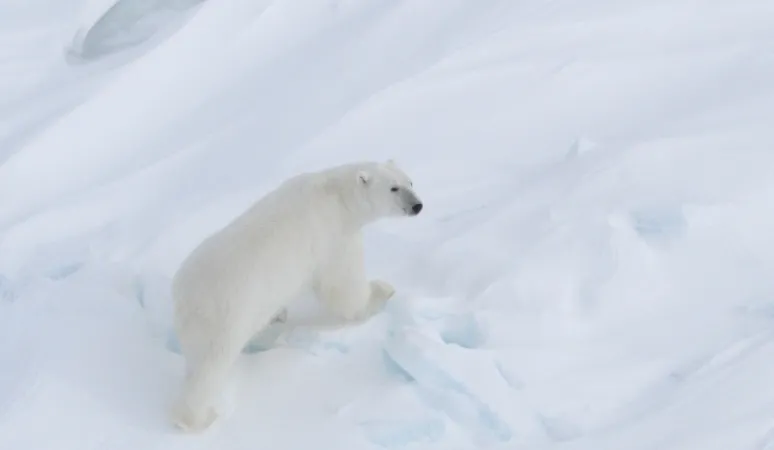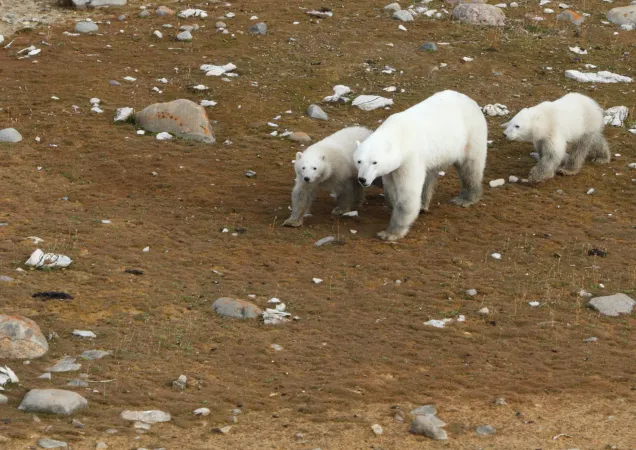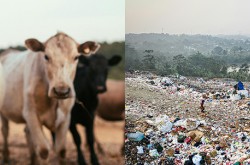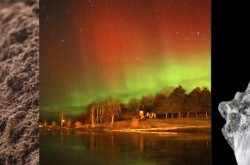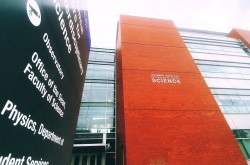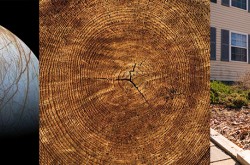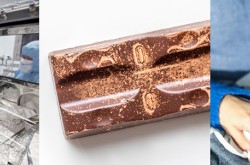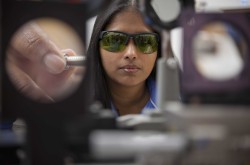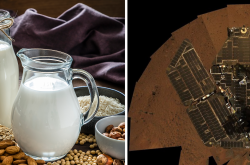The polar bear and the volcano
This article was originally written and submitted as part of a Canada 150 Project, the Innovation Storybook, to crowdsource stories of Canadian innovation with partners across Canada. The content has since been migrated to Ingenium’s Channel, a digital hub featuring curated content related to science, technology and innovation.
When Environment and Climate Change Canada scientist emeritus Ian Stirling started polar bear research in western Hudson Bay in the 1980s, he never imagined that it would become the first research program in the world to demonstrate the effects of climate change on polar bears.
Stirling started the research program simply because the scientific community didn’t know much about polar bears at the time. There was a need to answer some fundamental ecological questions. He and a small research team started with short 2- to 4-year studies to answer these questions. Each year, they would capture a sample of bears and collect biological samples to analyze back in the lab. They would also take standard measurements, like length and girth, and give each bear a numbered tag and a tattoo on its upper lip so they could identify it in the future.
As the studies continued and the amount of data collected grew, the researchers started to notice that the bears they captured were getting lighter. Why were the bears losing weight? One hypothesis was that it was due to changes in the seal population, which is the main staple of the polar bear diet. But survey data of seals in western Hudson Bay didn’t back this up. So it was back to the drawing board...
And then, in 1992 and 1993, the body mass of polar bears increased significantly, as did the survival rate of individual bears, particularly cubs born in these years.
As it turned out, the answer to the increase in the bears’ weight and survival was found halfway around the world in the Philippines. Mount Pinatubo had erupted in June 1991 and was one of the largest volcanic eruptions in the past century. It released a vast amount of ash and other particles into the atmosphere, where the wind carried them around the globe. These particles scattered and absorbed incoming sunlight, cooling the earth, particularly in Arctic regions.
This was all the polar bears needed. A few more weeks of colder weather delayed the annual breakup of sea ice and gave them additional time out on the sea ice, hunting seals and packing on some extra pounds. Although the benefit to polar bears from the cooling caused by Mount Pinatubo’s eruption was temporary, it provided the team’s first clue that their long-term data on polar bears could be extremely valuable in detecting large-scale ecosystem change, including the effects of climate change.
So a volcanic eruption and weight gain solved the weight loss question that had been puzzling researchers: it was declining sea ice, not seal populations, that was the culprit. Climate change is driving this loss of habitat. Research has shown that there is a direct link between increasing concentrations of greenhouse gases in the atmosphere and the loss of sea ice.
These days sea ice on Hudson Bay is breaking up in the spring 21 days earlier than it did when the research began in the early 1980s and refreezing 12 days later in the fall. Polar bears today have less time out on the ice to hunt seals and build the fat reserves they’ll need to live off while on shore. And because the ice-free period is getting longer, polar bears are also being forced to live off these smaller reserves for longer before they can go back out on the ice to hunt seals again.
Since the research program began, nearly 4,000 individual bears have been handled. While the core objective hasn’t changed over the years, new research questions, new technologies, and new partnerships have allowed the program to expand. Researchers are now looking at polar bears from a number of different angles. They’re studying their genetics to understand whether they might be able to adapt to climate change. They’re using hair samples to examine long-term stress levels associated with environmental change. And they’re deploying GPS-linked satellite collars to study how polar bears choose their habitat and where they go out on the sea ice. Elsewhere in Hudson Bay, the research team is using drones to study polar bears that are switching to terrestrial food sources like seabird eggs because their primary prey (seals) is harder to come by. And of course the team is still continuing the work started all those years ago, adding to a long-term data set that is the only one of its kind in the world.
Polar bears have been likened to the canary in the coal mine in terms of climate change. They are already experiencing its negative effects, which points to a need to take strong action to reduce emissions and adapt to our already-changing climate. The Pan-Canadian Framework on Clean Growth and Climate Change outlines Canada’s collective commitment to addressing climate change. Putting a price on carbon, reducing emissions across all sectors of our economy, improving climate resilience, and promoting clean technologies will benefit the health and safety of Canadians, the prosperity of our economy, and the health of our environment, including polar bears.



